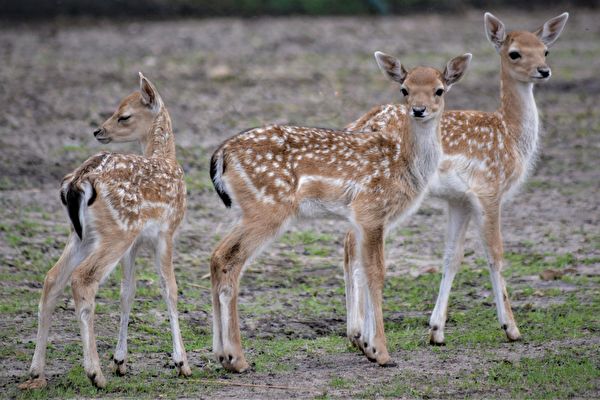Recently, a study has found that the health of the fallow deer roaming freely in Phoenix Park in Ireland has been affected by consuming chocolate, crisps, carbonated drinks, and other low-quality foods fed by visitors. In response, the park has initiated a campaign called “Protect Our Park – Do Not Feed the Deer”.
A study released by University College Dublin on June 18 revealed that low-quality foods have caused the antlers of male deer to shrink, reducing their success rate in finding partners during mating season. For female deer, it can result in overweight fetuses, leading to birthing complications.
The deer in Phoenix Park are wild and roam freely. Visitor feeding has also increased the deer herd’s reliance on outside food sources. The study found that a quarter of the deer now regularly approach visitors seeking food. Moreover, if mother deer become accustomed to relying on human feeding, it can lead to a cycle of dependence, making their offspring more likely to rely on human feeding as well.
To protect the health of the deer, there are signs throughout the park reminding visitors not to feed the deer, but the practice persists despite these warnings.
Minister of State at the Office of Public Works Kieran O’Donnell emphasized the importance of maintaining a distance from the deer and refraining from feeding them to protect these beautiful creatures that have been living in Phoenix Park for over 350 years. He highlighted that feeding behaviors can disrupt delicate ecological balances, ultimately affecting the survival of the deer population in the park.
Researchers recommend that visitors keep a distance of at least 50 meters from the deer and avoid any behaviors that may pose risks to the deer or themselves, including feeding and taking selfies. The entire park will increase signage to inform the public of the long-term adverse effects of unnatural feeding on the deer.
Phoenix Park is located in the northwest of Dublin city center and has a history dating back to 1660 when it served as a royal deer hunting ground. It was not until 1747 that the park officially opened to the public.
Covering an area of over 700 hectares, Phoenix Park is more than five times the size of London’s expansive Hyde Park and over twice the size of New York’s famous Central Park, making it the largest urban park in Europe.

